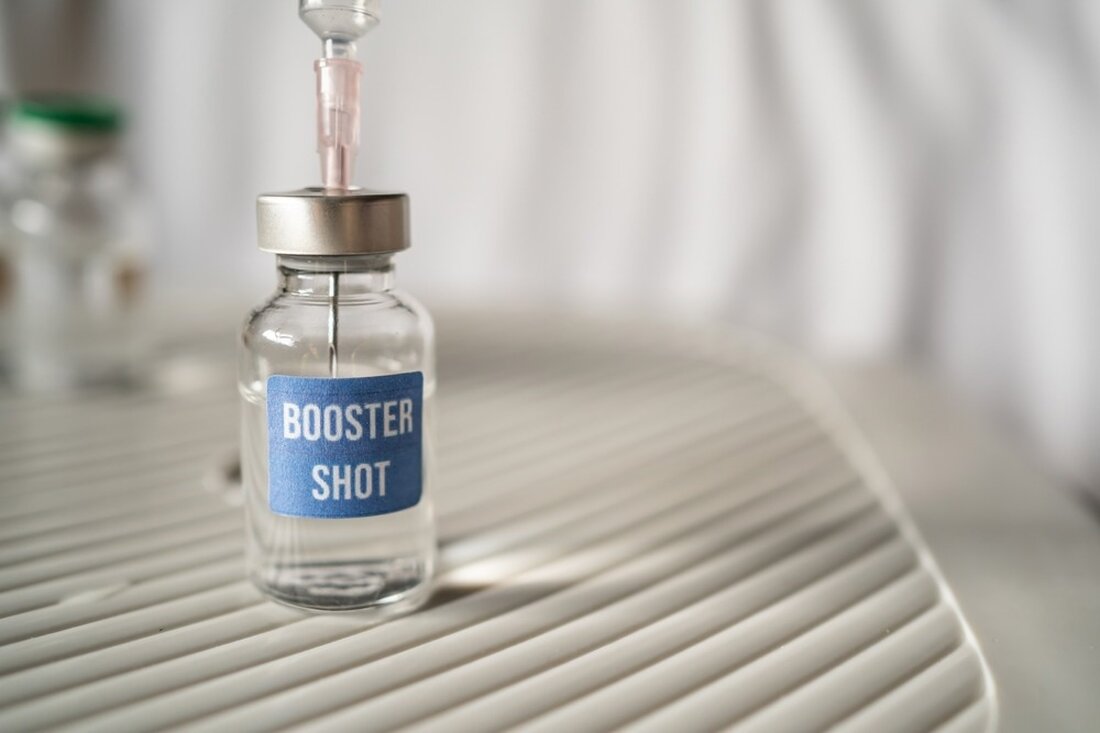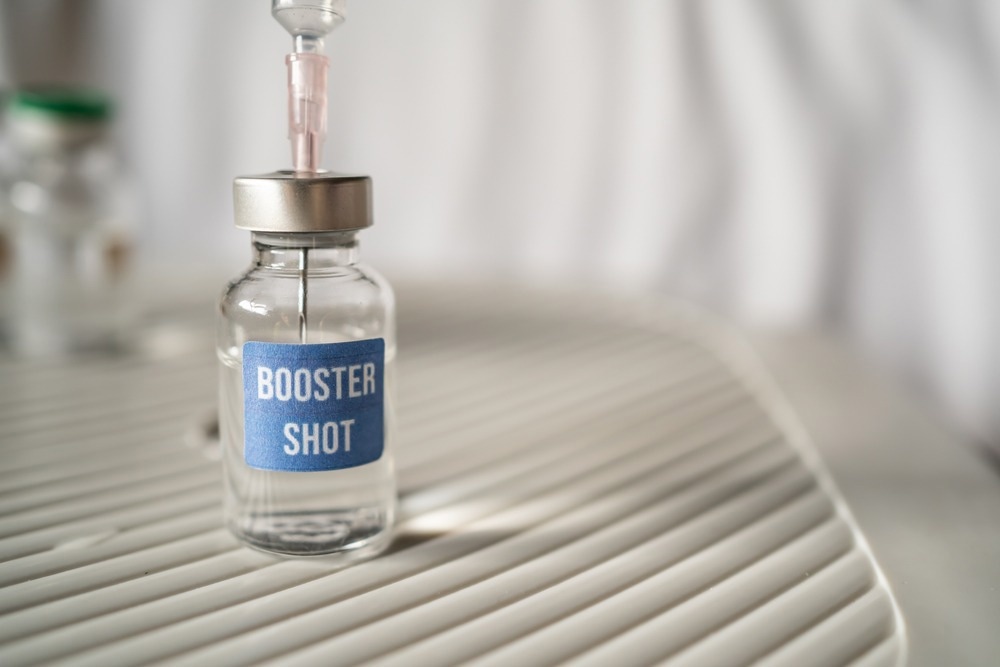The bivalent mRNA vaccine booster Omicron BA.4/BA.5 triggers similar neutralizing antibody responses as the monovalent vaccine
In a study recently published on the bioRxiv* preprint server, researchers analyzed the antibody response elicited by the new bivalent messenger ribonucleic acid (mRNA) severe acute respiratory syndrome coronavirus 2 (SARS-CoV-2) vaccines in individuals fully vaccinated with monovalent vaccines and in People who have had a breakthrough infection with the SARS-CoV-2 Omicron BA.4/BA.5 variants. Study: Antibody responses to the booster vaccination of the bivalent mRNA vaccine Omicron BA.4/BA.5. Photo credit: Wachiwit/Shutterstock This news article was a review of a preliminary scientific report that had not been peer-reviewed at the time of publication. Since its initial release, the…

The bivalent mRNA vaccine booster Omicron BA.4/BA.5 triggers similar neutralizing antibody responses as the monovalent vaccine
In a study recently published in the bioRxiv * Preprint server: Researchers analyzed the antibody response elicited by the new bivalent messenger ribonucleic acid (mRNA) severe acute respiratory syndrome coronavirus 2 (SARS-CoV-2) vaccines in people fully vaccinated with monovalent vaccines and in people who had breakthrough infection with the Variants SARS-CoV-2 Omicron BA.4/BA.5.

Studie: Antikörperreaktionen auf die Auffrischimpfung des bivalenten mRNA-Impfstoffs Omicron BA.4/BA.5. Bildnachweis: Wachiwit/Shutterstock
This news article was a review of a preliminary scientific report that had not been peer-reviewed at the time of publication. Since its initial publication, the scientific report has now been peer-reviewed and accepted for publication in an academic journal. Links to the preliminary and peer-reviewed reports can be found in the Sources section at the end of this article. View sources
background
The evolution of the SARS-CoV-2 virus has led to the emergence of far more infectious variants than the ancestral strain. The SARS-CoV-2 Omicron variant and many of its sublineages have been shown to remarkably evade humoral immunity acquired through previous infection or vaccination.
Recently, the U.S. Food and Drug Administration (FDA) granted emergency use authorizations (EUAs) for new bivalent messenger ribonucleic acid (mRNA) vaccine formulations of the original Pfizer and Moderna vaccines. These bivalent mRNA vaccines target the spike protein of both the ancestral SARS-CoV-2 strain and the SARS-CoV-2 Omicron BA.4/BA.5 variant.
Published data on neutralizing antibody responses elicited by bivalent mRNA vaccines are limited to animal and human studies with a bivalent vaccine targeting the Omicron BA.1 spike protein and the wild-type strain. Despite the extensive use of the new bivalent Omicron BA.4/BA.5 mRNA vaccines as booster vaccinations, there is very little information about the antibody responses they induce in humans.
About the study
In the present study, researchers collected sera from several cohorts, including 1) people who had received three or four monovalent mRNA vaccine doses, 2) people who had a breakthrough infection with the Omicron BA.4/BA.5 variant after monovalent mRNA vaccination, and 3) those who received the bivalent mRNA vaccines as a fourth dose.
The team used pseudovirus neutralization assays to test the sera for neutralization against the ancestral SARS-CoV-2 virus, Omicron sublineages, and other related sarbecoviruses. They compared virus neutralization by sera from people vaccinated with three doses of the original monovalent vaccines and a fourth dose of the bivalent BA.4/BA.5 vaccine with sera from people vaccinated with three or four monovalent vaccines and from people with Omicron BA .4/BA.5 breakthrough infection after mRNA vaccination.
They tested all collected sera for neutralization against the original SARS-CoV-2 virus strain D614G and the Omicron BA.1/BA.2, BA.4/BA.5, BA.4.6, BA.2.75 and BA.2.75. 2 sublines. They also tested the sera against many related sarbecoviruses, including GD-pangolin, SARS-CoV and WIV1.
People vaccinated with four monovalent doses were older, with a mean age of 55.3 years, than those who received a bivalent booster, with a mean age of 36.4 years. Sera were collected from all cohorts at similar time points after the booster dose (mean 24.0 days for the monovalent group and mean 26.4 days for the bivalent cohort).
Results
All groups showed the highest neutralization antibody titers (ID50) against the parent strain D614G of SARS-CoV-2. Boosted sera had the lowest geometric mean ID50 titers and BA.4/BA.5 breakthrough sera had the highest ID50 titers against SARS-CoV-2 variants. No significant difference in neutralization was observed between individuals who received four monovalent vaccine doses and those who received a bivalent vaccine as the fourth dose for any of the SARS-CoV-2 variants tested.
Interestingly, in the case of the three related sarbecoviruses - WIV1, SARS-CoV and GD-Pangolin - the neutralizing antibody titers of people who received a fourth dose of a monovalent vaccine were slightly but significantly higher than those who received the bivalent vaccine in addition to the fourth dose of vaccine.
The researchers observed that people who received the bivalent mRNA vaccine as a fourth dose had similar neutralizing antibody titers about three to five weeks after the booster vaccination as those who received a monovalent mRNA vaccine as a fourth dose against all SARS-CoV-2 variants tested in the study, including the Omicron BA.4/BA.5 sublines.
Diploma
Overall, at the time of the study, a fourth-dose bivalent mRNA vaccine targeting the ancestral SARS-CoV-2 strain and Omicron BA.4/BA.5 did not induce greater neutralizing antibody responses compared to the monovalent vaccines. According to the authors, the above findings could indicate an immunological imprint. Further follow-up would help determine whether neutralizing antibody responses to the bivalent vaccine will decrease over time, including antibody responses to a second bivalent booster vaccination.
This news article was a review of a preliminary scientific report that had not been peer-reviewed at the time of publication. Since its initial publication, the scientific report has now been peer-reviewed and accepted for publication in an academic journal. Links to the preliminary and peer-reviewed reports can be found in the Sources section at the end of this article. View sources
References:
- Vorläufiger wissenschaftlicher Bericht.
Qian Wang, Anthony Bowen, Riccardo Valdez, Carmen Gherasim, Aubree Gordon, Liu Lihong, David D Ho. Antikörperreaktionen auf die Auffrischimpfung des bivalenten mRNA-Impfstoffs Omicron BA.4/BA.5. bioRxiv 2022.10.22.513349. doi: https://doi.org/10.1101/2022.10.22.513349 https://www.biorxiv.org/content/10.1101/2022.10.22.513349v1 - Von Experten begutachteter und veröffentlichter wissenschaftlicher Bericht.
Wang, Qian, Anthony Bowen, Riccardo Valdez, Carmen Gherasim, Aubree Gordon, Lihong Liu und David D. Ho. 2023. „Antikörperreaktion auf Omicron BA.4–BA.5 Bivalent Booster.“ New England Journal of Medicine, Januar. https://doi.org/10.1056/nejmc2213907. https://www.nejm.org/doi/full/10.1056/NEJMc2213907.
Article revisions
- 16. Mai 2023 – Das vorab gedruckte vorläufige Forschungspapier, auf dem dieser Artikel basiert, wurde zur Veröffentlichung in einer von Experten begutachteten wissenschaftlichen Zeitschrift angenommen. Dieser Artikel wurde entsprechend bearbeitet und enthält nun einen Link zum endgültigen, von Experten begutachteten Artikel, der jetzt im Abschnitt „Quellen“ angezeigt wird.

 Suche
Suche
 Mein Konto
Mein Konto
